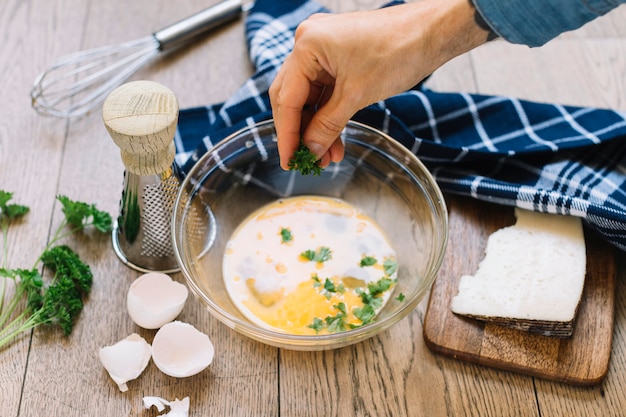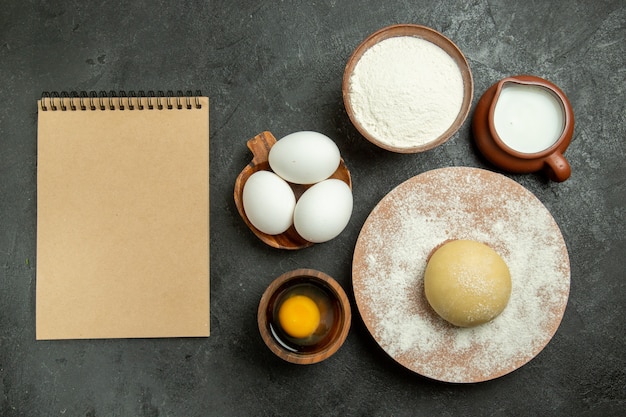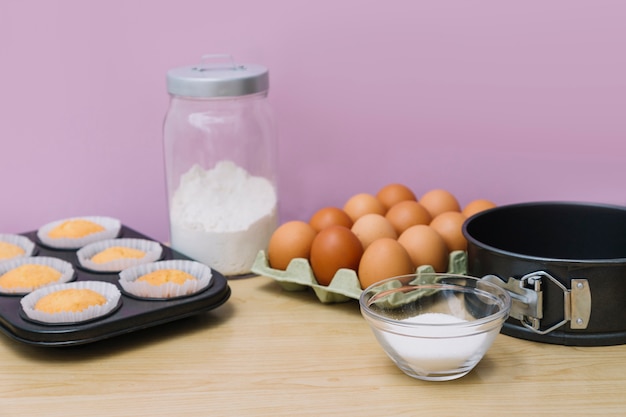egg whites, those clear, often overlooked parts of an egg, are actually a culinary treasure trove. They hold the key to airy meringues, fluffy soufflés, and silky sauces, and they are brimming with protein, making them a healthy choice too. But, for those who aren't familiar, egg whites can feel like a bit of a mystery. Let me tell you, mastering egg whites opens up a world of culinary possibilities! So, put on your apron, grab a whisk, and let's unlock the secrets of these kitchen heroes together.
(Part 1) All About Egg Whites: A Deeper Dive

Before we start whipping, let's delve a little deeper into what makes egg whites so special. They are mainly composed of water and protein, and it's those proteins that are the true stars. They have the remarkable ability to trap air, creating those light and airy textures we all love in desserts like meringues and soufflés. But egg whites can also add a silky smooth texture to sauces, and they are a valuable tool for creating gluten-free baked goods.
choosing the right eggs: Freshness Matters
You've probably heard it before, but fresh eggs truly make a difference. The older an egg gets, the more its ability to hold its shape diminishes, especially when whipping the whites. Here’s a little trick I've learned: give an egg a good sniff. If it has a very faint smell, it's likely fresh. Or, you can try giving it a gentle shake. If it feels wobbly, it's probably on the older side. You can also check the date on the carton, but sometimes, a little hands-on testing is more reassuring!
The Art of Separation: Egg White Ballet
Now, separating the egg whites from the yolks is an essential step. You want those whites pure, without a single trace of yolk, otherwise, they won't whip up properly. There are many methods, but here's my favorite: I crack the egg carefully onto a flat surface, and then use my finger to gently guide the yolk from one half of the eggshell to the other. It's like a little egg yolk ballet. The whites should drip into a separate bowl. It takes a bit of practice, but with time, it becomes second nature! Remember, even the smallest bit of yolk can ruin your whites, so keep a watchful eye on that delicate yolk!
Temperature: Cold Whites for Best Results
Here's a crucial tip that really changed my egg white game. Cold egg whites whip up better! So, if you've got time, pop those egg whites in the fridge for about 30 minutes before you start. You'll see a noticeable difference. Why does this work? The proteins in cold egg whites are tighter, allowing them to trap more air and create those impressive peaks. However, if you're making something that needs to be cooked, like a mousse or a cake, you'll want to bring your egg whites to room temperature. You don't want them to end up scrambled in your dessert, do you?
(Part 2) The Art of Whipping: Transforming a Liquid into Air

Alright, egg whites are separated and chilling. Now, it's time to get whisking! Whipping egg whites is a bit like a magical transformation. You start with a clear, runny liquid, and with a little effort, you turn it into a beautiful, airy cloud. It's truly fascinating, and the best part is, you can do it at home!
Tools of the Trade: Whisk or Stand Mixer?
When it comes to whipping, you've got two primary options: a classic whisk or a stand mixer. I'm a whisk enthusiast, especially for smaller batches. There's a certain satisfaction in the physical act of whisking. However, for larger batches or when you want to save your arm a bit of effort, a stand mixer is the way to go. Just make sure you have a good quality whisk attachment. You want something that will give you those beautiful, airy peaks, not just a dull, uninspired result.
Whipping Techniques: Soft Peaks to Stiff Peaks
Now, for the actual whipping. Start by whisking slowly, gently incorporating air into the whites. You'll see them become frothy and opaque. Keep going, and eventually, you'll notice soft peaks forming. These peaks will disappear when you lift the whisk. For stiff peaks, keep whisking! The peaks will become glossy, firm, and stand up tall when you lift the whisk. Don't over-whip them, though, or they'll become grainy and dry. It's all about finding that perfect balance!
Adding Sugar: The Sweet Spot
If you're making something sweet, like a meringue or cake frosting, you'll need to add sugar. The key is to add it gradually to prevent the whites from collapsing. My go-to method is to add a tablespoon at a time, whisking thoroughly after each addition, ensuring the sugar dissolves completely before adding more. I usually add sugar when the egg whites are at soft peaks. This helps to create a smoother, more stable texture. You can even use a sugar thermometer to make sure the sugar is fully dissolved.
(Part 3) Egg Whites in Action: Recipes and Inspiration

Now that we've covered the basics, let's explore some recipes! Egg whites are incredibly versatile, with endless possibilities. From delicate meringues to airy soufflés, there's a whole world of culinary delights waiting to be explored.
Meringues: Classic Delights
Meringues are a classic egg white treat that are easier to make than you might think. They come in all shapes and sizes, from delicate kisses to grand pavlovas. The secret to perfect meringues? Whipping the egg whites until stiff peaks, but not over-whipping. You want them glossy and firm, but not dry. Then, gently fold in sugar and any other flavors you desire. Bake them in a low oven until they're dry and crisp. They're delicious on their own or can be the foundation for amazing desserts like pavlova. Imagine those perfectly crisp edges and that soft, cloud-like center!
Simple Meringue Kisses
- 3 egg whites, at room temperature
- 1/2 cup granulated sugar
- 1/4 teaspoon vanilla extract
1. Preheat oven to 200°F (95°C).
2. Line a baking sheet with parchment paper.
3. In a clean bowl, whip the egg whites with an electric mixer until stiff peaks form. Gradually add the sugar while whipping, one tablespoon at a time, ensuring it dissolves fully before adding more.
4. Stir in the vanilla extract.
5. Using a teaspoon, spoon the meringue onto the prepared baking sheet, leaving a few inches between each cookie. Form peaks with a spoon or knife.
6. Bake for 1-1.5 hours, until the meringues are crisp. Turn off the oven and let the meringues cool in the oven with the door slightly ajar. Store in an airtight container at room temperature.
Soufflés: The Light and Fluffy Wonders
Soufflés are a little more challenging than meringues, but they're worth the effort. They are light, fluffy, and incredibly decadent. The key to a successful soufflé is to whisk the egg whites to stiff peaks, and then gently fold them into the rest of the batter. Be careful not to deflate the egg whites, or your soufflé will collapse. Bake them in a preheated oven and avoid opening the oven door while they're baking! Resist the temptation! A few minutes later, you'll be rewarded with a beautiful, risen soufflé. It's truly a sight to behold.
Savoury Cheese Soufflé
- 2 tablespoons butter
- 2 tablespoons all-purpose flour
- 1 cup milk
- 1/4 teaspoon salt
- 1/4 teaspoon black pepper
- 1/2 cup grated Gruyère cheese
- 3 egg yolks
- 3 egg whites
1. Preheat oven to 375°F (190°C).
2. Butter six 6-ounce ramekins and set aside.
3. In a saucepan over medium heat, melt the butter. Whisk in the flour and cook for 1 minute. Gradually whisk in the milk and cook until thickened, about 5 minutes. Season with salt and pepper.
4. Remove from heat and whisk in the Gruyère cheese until melted. Beat in the egg yolks, one at a time. Set aside.
5. In a clean bowl, whip the egg whites until stiff peaks form.
6. Gradually fold the whipped egg whites into the cheese mixture, starting with a few spoonfuls at a time. Be careful not to overmix.
7. Divide the batter evenly among the prepared ramekins.
8. Bake for 20-25 minutes, until the soufflés are puffed and golden brown. Serve immediately.
(Part 4) Going Beyond the Basics: Elevating Your Egg White Game
So, you've mastered the fundamentals of whipping egg whites. Now, let's delve into some advanced techniques that will take your egg white creations to the next level. These tips and tricks will help you create truly impressive dishes, from airy meringues to silky sauces.
Using Acid: The Key to Stability
Adding a touch of acid, like lemon juice or cream of tartar, to your egg whites can make a world of difference. Acid helps the proteins unfold and form stronger bonds, leading to stiffer peaks. This is particularly helpful for meringues and other delicate treats, ensuring they hold their shape beautifully. Just a pinch of acid can have a remarkable impact on the stability and structure of your egg white creations!
Whipping in a Bain-Marie: A Gentle Approach
Sometimes, you want to whip your egg whites without the risk of over-whipping. Enter the bain-marie. It's a gentle, controlled method for whipping egg whites, ideal for dishes like mousse or delicate cakes. To create a bain-marie, place a bowl of egg whites over a pot of simmering water, ensuring the bowl doesn't touch the water. Whisk gently, and you'll achieve beautiful, airy egg whites without over-whipping. It's like a little spa day for your egg whites!
Pastry Cream: A Classic French Delight
Pastry cream is a classic French dessert base made with milk, eggs, sugar, and flour. It's light, creamy, and incredibly versatile, perfect for filling pastries, cakes, and even as a base for ice cream. The secret to perfect pastry cream is slow cooking the custard over low heat, avoiding any burning. Then, you gently fold in whipped egg whites for that light and fluffy texture. It's a culinary dance, blending the custard with the whipped egg whites to create a truly magnificent dessert base.
Classic Pastry Cream
- 1 cup milk
- 1/4 cup granulated sugar
- 1/4 cup all-purpose flour
- 1/8 teaspoon salt
- 2 egg yolks
- 1 teaspoon vanilla extract
- 2 egg whites
1. In a saucepan over medium heat, combine the milk, sugar, flour, and salt. Cook, stirring constantly, until the mixture thickens and bubbles. Remove from heat.
2. In a separate bowl, whisk together the egg yolks. Slowly whisk in a few spoonfuls of the hot milk mixture until the egg yolks are tempered.
3. Pour the tempered egg yolks back into the saucepan and cook, stirring constantly, until the custard thickens again. Remove from heat and stir in the vanilla extract. Pour the custard into a bowl and cover with plastic wrap, pressing the plastic wrap directly onto the surface of the custard to prevent a skin from forming. Refrigerate for at least 2 hours.
4. In a clean bowl, whip the egg whites until stiff peaks form. Gently fold the whipped egg whites into the chilled custard. Use immediately or store in the refrigerator for up to 3 days.
(Part 5) Egg Whites in the Kitchen: Tips and Tricks for Success
Cooking with egg whites can sometimes feel like a balancing act, but with a few handy tips and tricks, you can avoid common pitfalls and achieve culinary success every time.
Avoiding Over-Whipping: The Key to Lightness
Over-whipped egg whites are grainy and dry, which can ruin your dish. The secret is to find that perfect balance. If you're unsure, stop whisking a few seconds early. You can always whip them a little more later if needed. Remember that room temperature egg whites whip up more quickly, so be careful not to over-whip them.
Incorporating Whipped Egg Whites: A Gentle Touch
When folding whipped egg whites into a batter or custard, it's essential to do it gently. You don't want to deflate the air bubbles that create that airy texture. Use a spatula or a whisk and fold the egg whites in with a light, circular motion. You'll see the egg whites gradually incorporate, creating a light and airy texture. It's a delicate dance, so be patient and you'll be rewarded with a beautifully light and airy result.
Dealing with a Collapsed Soufflé: Solutions to a Culinary Dilemma
A collapsed soufflé is a real culinary disappointment. But don't despair! There are a few things you can do to prevent this from happening. Firstly, make sure you don't over-whip the egg whites. Secondly, avoid opening the oven door while the soufflé is baking. And finally, serve the soufflé immediately after it's baked. The heat of the oven helps the soufflé hold its shape, so there's no time to waste!
(Part 6) Egg Whites and Health: A nutritional powerhouse
Egg whites are not just a culinary marvel, but also a nutritional powerhouse. They are packed with protein, vitamins, and minerals. They are also low in calories and fat, making them a great choice for those who are mindful of their diet.
Protein Power: Building Blocks for Strength
Egg whites are an excellent source of protein. Protein is essential for building and repairing tissues, and it also helps you feel full and satisfied. A single egg white contains about 3 grams of protein. So, if you're looking to boost your protein intake, egg whites are a great option.
Vitamin and Mineral Rich: A Nutritional Boost
Egg whites are also a good source of vitamins and minerals, including riboflavin, niacin, and selenium. These nutrients play important roles in maintaining overall health. Riboflavin is essential for energy production, niacin helps support healthy skin, and selenium is an antioxidant that helps protect cells from damage.
Low in Calories and Fat: A Healthier Choice
Egg whites are naturally low in calories and fat. They contain almost no fat, making them a healthier alternative to whole eggs. If you're watching your weight, egg whites can be a great addition to your diet. Just remember to enjoy them in moderation, and don't be afraid to experiment with different recipes!
(Part 7) Egg White FAQs: Your Questions Answered
You've got questions, I've got answers. Let's clear up any lingering doubts about egg whites and set you on the path to culinary mastery.
FAQs
| Question | Answer |
|---|---|
| Can I use egg whites from store-bought eggs? | Absolutely! Just make sure they are refrigerated and use them within a few days of opening. You can also freeze egg whites for up to 3 months. Just thaw them overnight in the refrigerator before using. |
| What if my egg whites don't whip up? | There are a few reasons why your egg whites might not whip up properly. Make sure the bowl and whisk are clean and grease-free. Also, ensure that the egg whites are cold. If they're too warm, they won't whip up as well. And remember, even a tiny bit of yolk can prevent the egg whites from whipping up properly. So, make sure you separate them carefully. |
| What can I do with leftover egg whites? | Don't throw them away! You can freeze leftover egg whites for up to 3 months. Just thaw them overnight in the refrigerator before using. Or, use them to make a quick and easy omelet or frittata. You can also use them to make homemade mayonnaise or salad dressing. |
| What happens if I over-whip my egg whites? | Over-whipped egg whites are grainy and dry. If you accidentally over-whip them, you can add a tablespoon of fresh, unwhipped egg whites to help soften them. If that doesn't work, you can start over with fresh egg whites. It's all about practice and learning from your mistakes. |
| Can I substitute egg whites for whole eggs in recipes? | Sometimes, you can substitute egg whites for whole eggs in recipes. However, it's important to note that egg whites don't have the same binding properties as whole eggs. So, you may need to adjust the recipe accordingly. For example, you might need to add more flour or starch to compensate for the lack of yolks. It's always best to experiment and see what works best for your particular recipe. |
(Part 8) The Egg White Journey: A culinary adventure
And there you have it, a comprehensive guide to cooking egg whites! I hope this journey has inspired you to explore the world of egg white possibilities. Remember, cooking is about creativity and experimentation. Don't be afraid to try new things and have fun. Who knows, you might even discover your next culinary masterpiece. So, grab your whisk, put on your apron, and let the egg white adventure begin!
Everyone is watching

Corn on the Cob: The Ultimate Guide to Perfectly Cooked Ears
Healthy MealsAh, corn on the cob. Just the name evokes images of sunny days, barbecues, and that sweet, juicy flavour that ...

Perfect Pork Roast Oven Cooking Time: A Guide to Delicious Results
Healthy MealsThere's something truly satisfying about a perfectly roasted pork. The aroma alone is enough to make your mout...

Ham Cooking Time: How Long to Bake, Smoke, or Boil a Delicious Ham
Healthy MealsAh, ham. It's a classic, isn't it? A real crowd-pleaser, especially around holidays. And when done right, it'...

Scallops: The Ultimate Guide to Perfect Cooking
Healthy MealsAh, scallops. Those delicate, sweet, and utterly delicious morsels of the sea. They hold a special place in my...

Spaghetti Squash: The Ultimate Guide to Cooking and Serving
Healthy MealsRemember that time you saw spaghetti squash at the supermarket, looking all bumpy and strange, and thought, "W...
